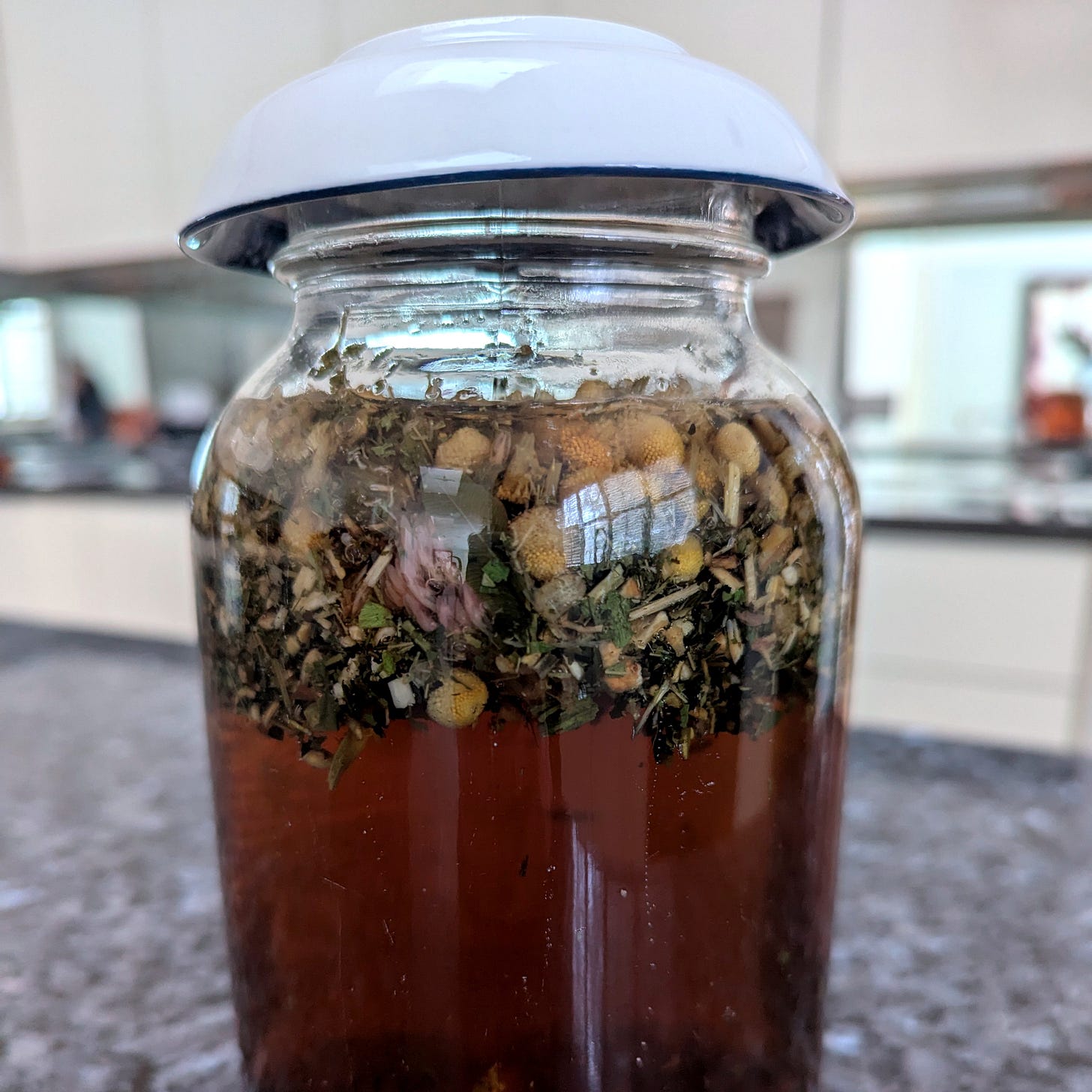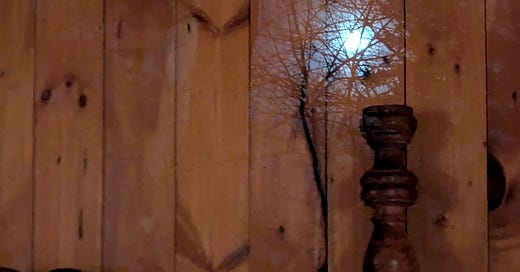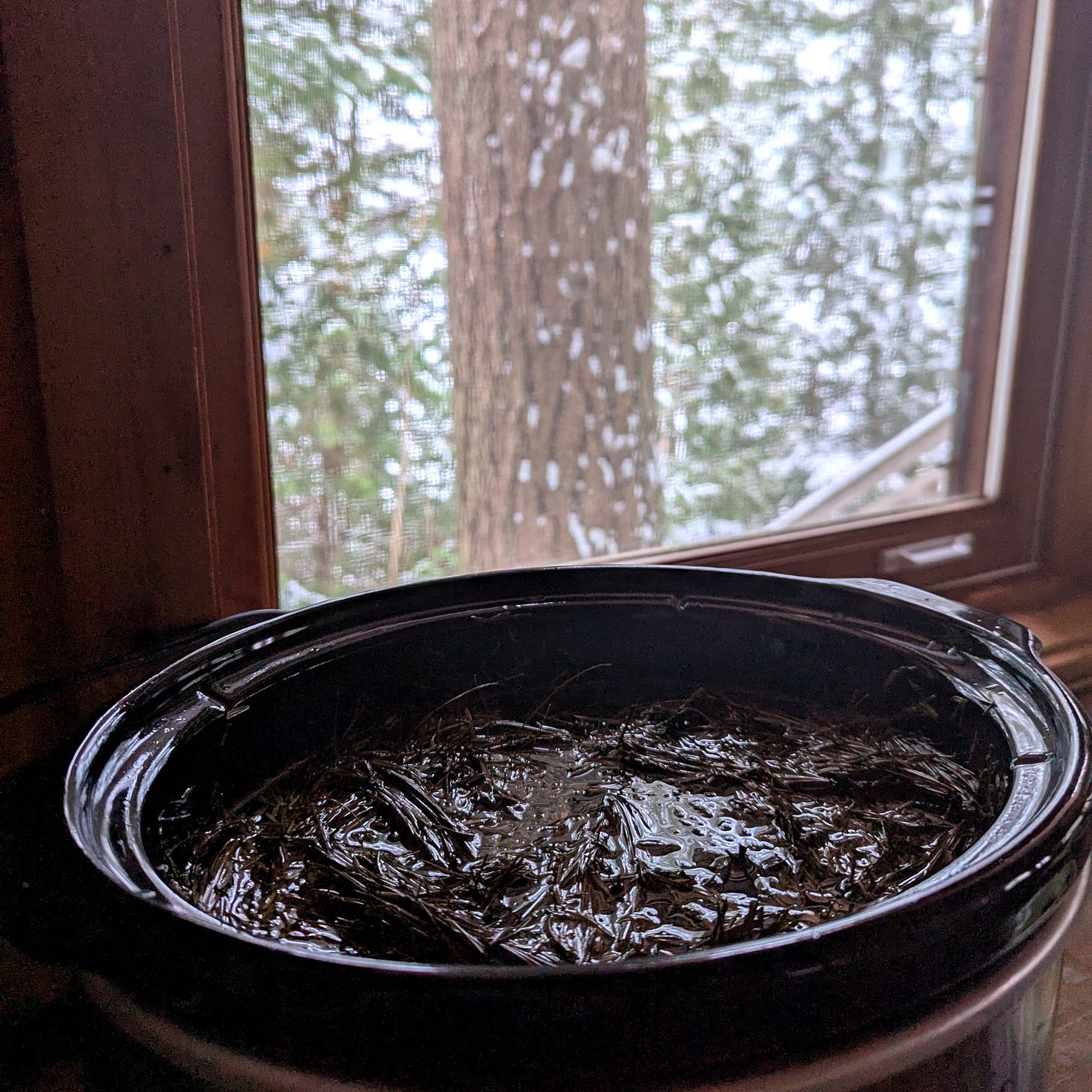My dream of sowing a new garden has lain dormant for a few years while I moved around to complete my master’s. From my suburban apartment in Rhode Island, I built its Pinterest board, sketched its keyhole shape in my mind, and tended to community food gardens with the Rhode Island Master Gardeners. Now, my fingers are itching to start planting this spring — albeit on partly shaded ground.
A couple of weeks ago, I ordered seeds from BC’s Ravensong Seeds & Herbals, prompted by their Imbolc discount. Browsing their catalogue, I noticed cucumbers, spinach, and radishes forming neat rows alongside poppies, tobacco, and borage. It got me thinking (again): Where is the line between food and medicine — particularly herbal medicine?
I’ve grown potager gardens and food forests where herbs nestled up beside food crops, offering layers of protection and nutrients. Similarly, my new garden is going to be a delightful tangle of what many would categorise separately as ‘food,’ ‘medicinal plants,’ and ‘ornamentals.’ I believe this intentional diversity makes for a happier garden.
Like humans, plants do well in diverse ecosystems. They don’t classify themselves as medicinal or not (at least to my knowledge). Rather, their biochemistry shifts in response to environmental stressors like drought or insect predation, increasing their secondary metabolite production and, in turn, their therapeutic actions.
A plant’s biochemical makeup determines if and how we can work with them. We herbalists sometimes reference Hippocrates’ adage: The dose makes the poison. This is known as the therapeutic window, or the optimal range in which a plant offers the most healing action. Exceed it, and harm can potentially result. The concept is poetic, reinforcing the call to respect plants, whether as food or medicine, by taking only what we need, and sowing more than we take, when we can.
We can also extend this concept beyond individual health. When at least 25% of pharmaceuticals come from medicinal plants — often through the theft of traditional ecological knowledge and Indigenous Land — haven’t we, as settler-colonial capitalist societies, surpassed the window of respect for plants and their human stewards, which is a gateway to communal healing?

Grassroots Public Health
Increasingly, public health is recognising the importance of access to dense, nutritious food as a social determinant of health. Many public health programs focus on educating folks about food — how to prepare, eat and grow food together. As an herbalist, I naturally wonder why education on sustainable, culturally appropriate herbal medicines can’t also be considered a social determinant of health?
With food insecurity and apartheid on the rise, herbal medicine can help fill nutritional and therapeutic gaps, improving quality of life and disease resilience while fostering greater respect for the land and all its inhabitants.
Take fire cider, for example. In the early 1980s, the fairy godmother of contemporary North American herbalism, Rosemary Gladstar, created a powerhouse immune formula with her students. Combining grocery-store staples like onion, garlic, ginger, and horseradish, the recipe bridges the imagined gap between food and medicine. It has helped generations rediscover herbalism after it was driven underground around a century ago. When an enterprising business attempted to trademark the name, three herbalists — now known as the Fire Cider Three — fought back, protecting this and other collectively held recipes.
Since, whorls of herbalists are teaching their communities how to engage with plants, in areas from wound care and sleep hygiene, to chronic illness and pain management. Additionally, many Indigenous healers, growers and activists have never stopped doing this work in spite of multilayered genocide, criminalisation and environmental changes. In recent years, The Indigenous Food Sovereignty (IFS) movement has gathered momentum around revitalising Indigenous food traditions — including medicine — as well as reclaiming Indigenous Lands.
Just as food knowledge is passed down through generations, medicinal plant knowledge is also a transgenerational resource meant to be shared within bioculturally connected communities. Doing so fosters medicine security, a concept similar to food security—one I wrote about years ago in my free guide, Making Gardening Medicinal. Simply, everyone should have reliable, equitable access to the medicines and supplies they need to sustain their bodyminds. This includes both pharmaceuticals and herbal medicines, as each has strengths and limitations in addressing our vitality.
Herbal medicine security is not a radical concept, though it may seem so today. Until roughly a century ago, it was common for herbal recipes to pass through Indigenous, enslaved and coloniser lineages, with the latter often coopting the formers’ knowledge. Apothecaries were widespread, and most households/communities shared some form of cultivated land. However, the Flexner Report (1910) changed the landscape of medical education across Turtle Island, shutting down healthcare institutions that did not conform to the biomedical model that dominates today. This relegated many traditions to ‘alternative’ status, including herbal ones.
Gradually and then all at once, safe, edible foods and medicines became the purview of grocery stores and pharmacies. Supply chains distanced us from farmers and the land-based origins of the food we rely on. Many gardens shriveled up, replaced by condominiums and parking lots.
Today, I would love for every child to be able to identify at least a handful of medicinal plants in their neighbourhood — the weeds, the trees, the mushrooms that sprout after a thick rain. I want them to learn their unuttered names and make potions the way we ’90s kids did. To grow up nourished by mineralising teas, heal rashes with salves, splash around in rose and cedar baths, and sip diaphoretic elixirs at the first sign of a flu, instead of looking to suppress it.
Note: As we reclaim food and medicine security, it’s also important to resist purity culture around ‘whole foods’, ‘natural medicines’ and even ‘native plants’. For instance, ultraprocessed foods can be demonised, yet the vast category ranges from canned beans to candy. For many, these options provide nourishment when fresh produce or home-cooked meals aren’t viable. I know ultraprocessed foods like chips have at times nourished my being when an apple couldn’t. Food and medicine security should cater to all the ways folks sustain themselves, not just an idealised few harkening to a pre-industrial past.
Turning Dust To Hope
My chest is inflamed by the
states of the world.
A world of pain,
inflicted by a ruptured state—
in breach.
Faulty promises churn out productions
of memes and metaphors.
We denizens long for meaning
to stand for something;
not just grandstand,
tossing words like seeds,
never to crack.
Gratuitous figures dodge
their dates with justice.
Scheming together,
they cook up a bland stew
from what would’ve been—
someone's food, water, shelter,
children.
Food apartheid booming
atop a genocided land.
Home to Earth-wise peoples,
still the home of Earth-wise peoples,
who lean in
to hear ancient whispers skirting the wind,
instead of suckling the dirt dry
by the fistful.
With Earth-wise care,
Aleksa
Interweb Encounters
The Beauty of the Bioregional Approach to Your Herbal Practice: Learn the why’s and how’s of practicing bioregional herbalism from Albuquerque Herbalism, a community herbalism program in New Mexico.
Plant School 2025: This hands-on course run by herbalist and acupuncturist Shabina Lafleur-Gangji from May-October on Dish with One Spoon Treaty Land (so-called Guelph) is for BIPOC folks of any herbal experience level.
The Cyber-Cleanse: Take Back Your Digital Footprint: Like many of us, I’m trying to figure out how to gain more data security and privacy, while moving away from technocratic organizations like Google. It’s hard and I feel it’s worth it. Here are some ideas!
Tanya Tagaq: I saw Tanya perform her throat-singing fusion ensembles with the Boston Orchestra when I was in Rhode Island last year and she shook my core. Check out her haunting ‘Tongues’ album (2022).
The Prince of Mutual Aid: Read about a Russian aristocrat who became an anarchist and wrote the book, Mutual Aid, more than a century ago.
Future Spell’s Virtual Free Clinic: This is a fantastic offering for folks in so-called Canada who are seeking barrier-free herbal care. Herbalist and herb farmer Jessye Finch has two consultation spots available per month and provides up to $35 of herbal medicine grown on their farm based on your custom treatment protocol.
Foggy River Farm: If you’re in so-called Ontario, check out the herbal products made from regeneratively grown medicinal plants. I met Kate at the Toronto Tea Festival this month and was so happy to support these local and ethical herb growers. The Forest Air tea is so perfect for this damp and cold time of year!
Worlds End School 2025 Residencies: These self-guided farm residences in the Mohawk Valley of NY look so dreamy, for anyone who wants to work on their creative skills or just relax in a communal setting ($350/wk donation).
H&H Offerings
Herbal Consultations: Accessible care rooted in anti-oppressive praxes.
The Inner Sanctum Course: Strengthen your capacity for emotional regulation and liberation after stressful experiences with Earth-wise care practices.
Herbal Kin: Supporting Herbalists in Practice: Build your clinical herbalism practice in a peer-led, justice-oriented network.
Food for Wisdom
“To have a movement that breathes, you must build a movement with the capacity to grieve.”
—Malkia Devich-Cyril
“When small men begin to cast big shadows, it means the sun is about to set.”
—Lin Yutang
“Kinship-mind, which is about relationships and connectedness. In Aboriginal worldviews, nothing exists outside of a relationship to something else. There are no isolated variables—every element must be considered in relation to the other elements and the context. Areas of knowledge are integrated, not separated. The relationship between the knower and other knowers, places, and senior knowledge-keepers is paramount. It facilitates shared memory and sustainable knowledge systems."
—Tyson Yunkaporta







